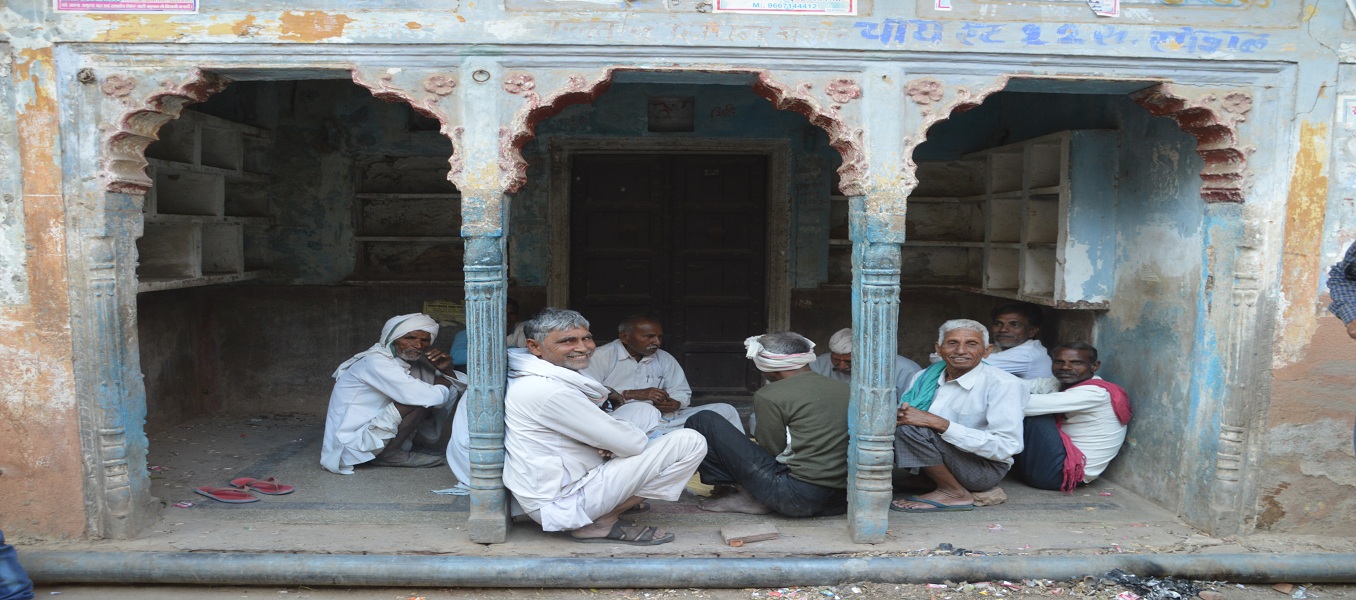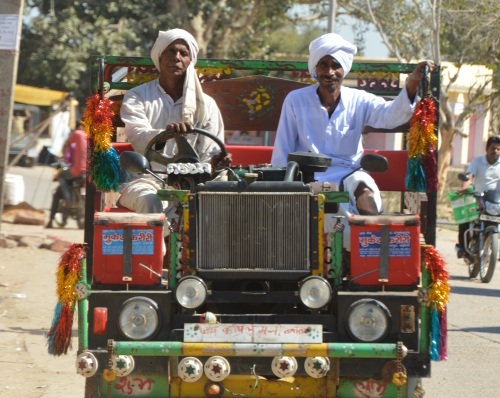
Village Garh himmat Singh
On the edge of Eastern Rajasthan and is an off beaten trek in between Agra – Jaipur vise-a-versa. The specialty of the region and village is that it is where the Meena and Gujjar tribes are majorly in populations and we were the company who started our first effort toward the sustainability of lifestyle in this region as there were happenings and which due to lacking mentor or less interest of by the time has pass, when we found a two hundred year building used a temple before, on at ruined stage, we took it as responsibility for sustaining the story and made it a common place for the village children for the fun activities and library for elderly people, renovated and made an off the beat path… visit to special village is also an effort to develop as an interactive tour between guest and host and our effort to take you here is also to provide you an authentic lifestyle other than visiting the normal tourist paths and monuments.
Explore the village Garh Himmat Singh covering the house of potter, Panchyat Bhawan (Head office of Village), Girl’s and boy’s schools of village, local bazaar.

Alsisar
A special village of Shekhawati region, an open art gallery of fresco paintings on the walls of village house, along with the fresco Alsisar is also famous for its castle, havelis and cenotaphs, In the north-western part Rajasthan, the area surrounding is an arid semi desert.
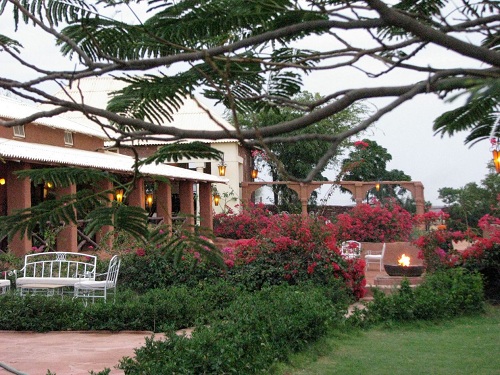
Osian
Osian (also spelt Osiyan) is an ancient town located 69 km by road north of Jodhpur Rajasthan, an oasis in the Thar Desert. Venturing out on camel one can meet the proud local tribes, the Bishnois and Bhils, potters and weavers and shepherds in their natural surroundings, not to mention the various varieties of desert wildlife such as bluebulls, gazelles, foxes, peacocks and partridges to name but a few. Also enjoy mesmeric view of sunset during the Camel ride. Osian is famous as home to the cluster of ruined Hindu and Jain temples dating from the 8thto 12thcenturies.

NAWALGARH
Nawalgarh, is part of the Shekhawati region and is midway between Jhunjhunu and Sikar. It is 30 km from Sikar and 39 km from Jhunjhunu. Nawalgarh is famous for its fresco and havelis and considered as Golden City of Rajasthan. It is also the motherland of some great business families of India. Nawalgarh’s heritage is rich with all the painted havelis and buildings and is regarded as the Golden City of Rajasthan. The havelis are the mansions that possess of the beautifully carved wooden gates and the painted walls. A Cluster of Havelis are there to visit like Anandilal Poddar Haveli, Bansidar Bhagat Haveli, Chokhani Haveli, the Aath (eight) Haveli complex, Chhawchhariya Haveli, Murarka Haveli, Bhagton Ki Haveli and Khedwal Bhavan. Most of the havelis was constructed in the 18th century and the early 19th century.
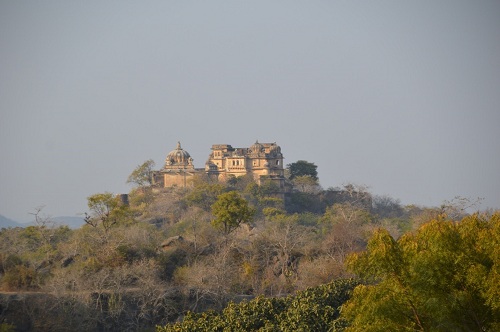
Deogarh
Also known as Devgarh, is a town and a municipality in Rajsamand District in the Indian state of Rajasthan. Deogarh is a popular tourist destination, boasting a complex of luxurious heritage resorts managed by the erstwhile royal family of the Deogarh thikana.
One can enjoy a jeep safari in the evening by an open hooded jeep equipped with a tea, snacks and a pair of binoculars, drive out of the village of Deogarh along the farms and see crops in the fields and arrive at the Anjana temple, a Shiva shrine ensconced in a cave where bats hang from the roof of the cave, drive through a shepherds village, see the cattle returning from their day of grazing and watch magnificent sun set and view the migratory birds which are winter guests only.
Apart from the palace there is also a meter gauge train from Deogarh to Marwar Junction which goes through the sanctuary and hills of Kali Ghati, where there are many bridges and tunnels constructed by the British. There are many wild animals in the region, and the plains of Marwar are visible from atop the mountains.There is one clock tower in the main central chowk (market) of the town at the top of Charbhuja Temple.
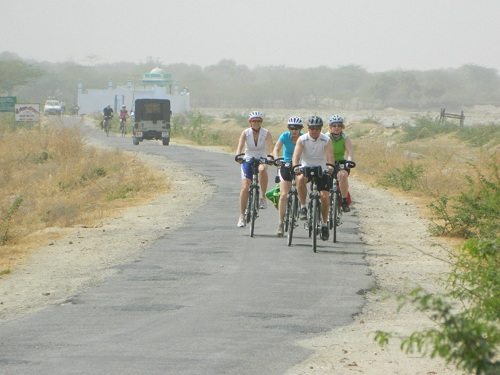
Sambhar
Largest inland saltwater lake of India. It is a bowl-shaped lake in the historical town of Sambhar, located at a distance of 60 km from Jaipur in Rajasthan in India.
Ecologically speaking Sambhar has been designated as a recognized wetland of international importance because the wetland is a key wintering area for tens of thousands of flamingos and other bords that migrate from northern Asia. There is other wildlife in the nearby forests, where Nilgai move freely along with deer and foxes.
Sambhar lake also finds its mention in the Mahabharata the epic. It was the kingdom of the demon king Brishparva, as the place where his priest Sukracharya lived, and as the place where the marriage between his daughter, Devayani, and King Yayati took place.
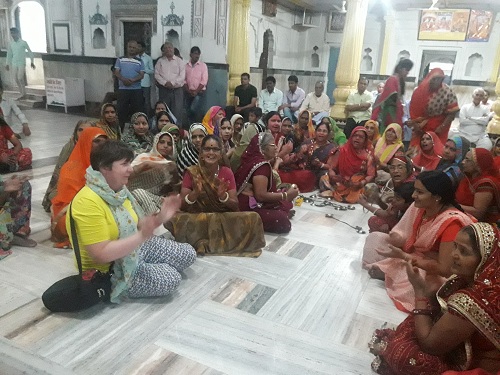
Karauli
Town in the state of Rajasthan. An old princely state, it has an old fort and several palaces with some very attractive frescoes and jaalis. Although off the beaten track, it is well worth a visit.
One can walk through the local bazaar of the villageor go by camel cart to see the 600 year old city where the locals does the handicraft handmade shops of Lacquer work, bangle making, wooden toys, bamboo items, traditional sweets etc. being made. A 500 year old city palace full of frescos, fine stone carvings & paintings,Madan Mohanji Temple is located at Karauli fort in the city of Karauli, a deity of lord Krishna and was constructed by Maharaj Gopal Singh. the 3 ft and 2 ft high statues of lord Krishna and Goddess Radha, respectively. The common belief is that after conquering the battle of Daultabad, Maharaja Gopal Singh dreamthat Lord Krishna wanted him to enshrine his idol at a temple in Karauli by bringing it from Amer.
In Karauli Annual Cattle fair is held where one can witness famers with hundredsof camel, horses, buffaloes etc, cattle fair is held between FEB – March. Kaila Devi religious fare is also held in karauli between March – April and Sept – Oct.
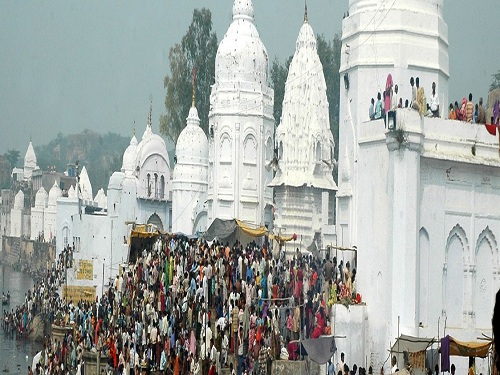
Bateshwar
Village near Agra, on the banks of the river Yamuna, known for the 101 Shiv Temple Complex. An annual religious and animal fair is also organised in the village ground area..
Since ages Bateshwar remained a renowned religious center both for Hindu and Jain communities. In the epic Mahabharat Bateshwar has been referred as Shouripur a city of king Suresaine.
A cattle fair is hosted every year in October and November. Although the origins of this ancient fair are religious, and of enormous significance in the Hindu religious calendar, the fair is also of great commercial value and is renowned as the 2nd largest animal fair in the country
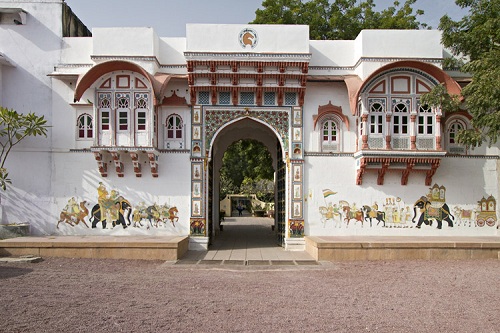
Rohetgarh
Rohetgarh a destination itself issituated on the banks of a lake and set in the midst of rural surroundings, it is a haven of peace and tranquillity. Sprawling lawns and manicured gardens, which invite a multitude of birds and dancing peacocks, herald your entry into this oasis where the bird song is the only sound you will hear. A superb swimming pool with four charming pavilions entices you for a refreshing dip. Evening poolside folk musicians enliven the evening atmosphere. An elegant, beautifully appointed lounge, serene verandas, and terraces with breathtaking views, make perfect venues for relaxation.
The place is popular for cycling, and bike hire is available at Rohet Garh. One can enjoy jeep safari, folk dancing and a magic show. Other activities include ‘The Village Safari’, and an array of activities from an extensive equestrian program to culinary workshops.


